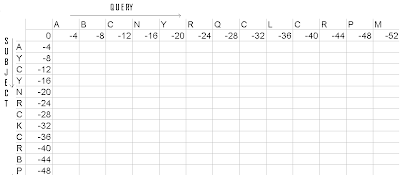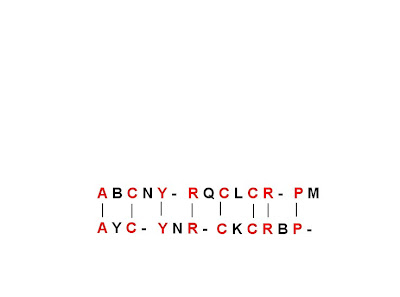Within the nucleus of our cells, a very fine thread like structure is present known as chromosome. The chief component of chromosome is the DNA( Deoxyribonucleic acid). Without getting into much detail, just know this that the DNA can be represented as a string of letters. Example- ACCTGATCGATCAGTGACGAT, such strings are known as DNA sequences.
Let us align 2 DNA sequences. Seq1- ACTG Seq2- ACTP. Without using any algorithms, we can determine the alignment of these 2 sequence.
Suppose the sequences to be compared are much more complex, saySeq1- ABCNYRQCLCRPM( Query Sequence )
Seq2- AYCYNRCKCRBP( Subject Sequence )
In such cases, we use algorithms; 2 main algorithms used are Needleman-Wunsch algorithm and Smith-Waterman algorithm. The former is used for Global Alignment while the latter is used for Local alignment. In Global Alignment the whole of the query seqence is compared to the subject sequence for alignment. In Local Alignment, the query sequence is partioned and , and the bits are compared to the subject sequence. Let us solve the above problem using Needleman-Wunsch algorithm.
3 steps are involved-
=> Initiation of the matrix
=> Filling up the matrix
=> Tracing back
Before we initiate the matrix we have to assign the match value, mismatch value and gap value. Let us keep, match=5 mismatch=-3 gap=-4
=> Filling up the matrix
Then make another similar matrix. In that fill up the same position, with the type of value you have chosen i.e. - whether the diagonal value is selected, the top value is selected or the left value is selected.
Continue filling both the matrix
 Figure2- Filled up matrix
Figure2- Filled up matrix Figure3- Filled up Location matrix
Figure3- Filled up Location matrix=>Tracing back
Figure4- Tracing back of the matrix
Based upon the second matrix, we shall trace back. Our start position is the last cell of the last row, and our stopping position should be the first cell of the first row.
After we have obtained the trace back matrix, we shall do the final alignment.
Final Alignment on the basis of first pathway in matrix is:-
Figure5- First pathway in the matrix
If a cell has diagonal arrow, arising from it, then there will be a match. Example- Just consider the brown labeled cell in the above diagram, since it has a diagonal arrow arising from it, P from the left axis and P from the top axis would be a match.
If the cell has vertical arrow arising from it, then there will be a gap along the query sequence. Example- Just consider the green labeled matrix in the above diagram, since it has a vertical arrow arising from it, there would be a gap along the top axis.
If the cell has a horizontal arrow arising from it, then there will be a gap along the subject sequence. Example- Just consider the pink labeled matrix in the above diagram, since it has a horizontal arrow arising from it, there would be a gap along the left axis.
Figure6- Final Result on the basis of the first pathway
Similarly do Final Alignment on the basis of second pathway in matrix:-
Figure7- Second Result on the basis of the first pathwayFigure8- Final Result on the basis of the second pathway
Both these alignments are correct. I hope you have understood this concept, if not feel free to comment and I shall solve your doubts.






